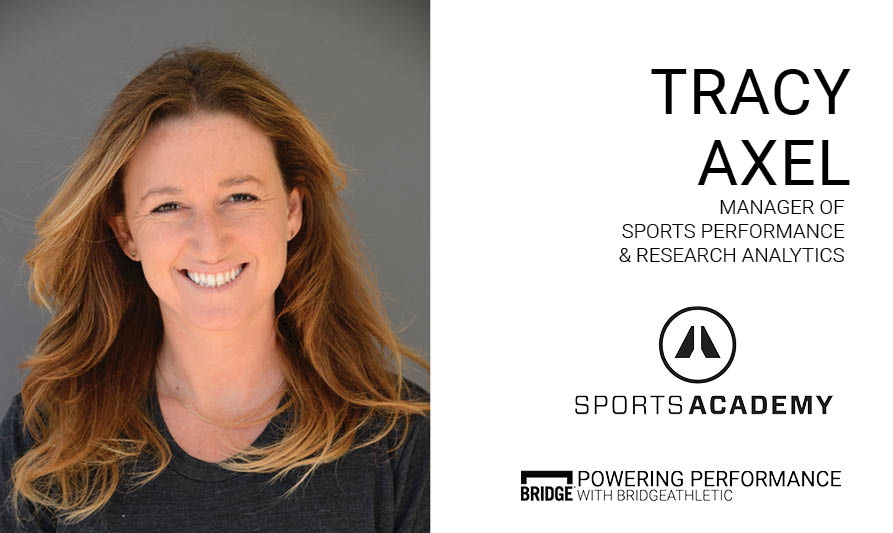Teach Yourself What Matters
After reading last weeks blog, Treating Everyone Like An Athlete, you may be wondering how does Sports Academy do it? How do they create such a dynamic environment, train a vast array of athletes and stay current with their methods and tech? Well, we don’t want to spoil too much - but a lot of it can be attributed to quality research. In part I, Tracy Axel, Manager of Sports Performance & Research Analytics, filled us in on one of her secrets for success - communication. But, this week we take a closer look at how this two-year-old start-up is able to establish themselves as a powerhouse for athlete training.
Is this not ringing a bell? In that case, check out Part I.
Startup life.
“We have grown at the start up level by pulling from within the community.”
As a startup, Sports Academy stays close to their core values, but is ready to adjust if sudden changes occur. Tracy speaks to this saying, “The level of expertise within our training staff does a great job of responding to the ebbs and flows of a startup environment.” This means being flexible and putting the athlete at the forefront of all decision making. Which is why the first question Tracy asks when making a decision is: "What matters most to our athletes? "
At Sports Academy every decision, every test, and every exercise is made with an athlete’s end goal in mind. As the company continues to grow, they remind themselves that consistency is the key to success. More specifically, staying focused through the various metrics and methods they employ to help their athletes succeed.“The conversation I love the most is why the 2x25 bench for the NFL combine is the most heavily debated test for strength. But at the same time, it is what those athletes have to do for that combine and for that test.” These metrics are a driving factor for why athletes come to Sports Academy. It's also why there's so much pressure to stay ahead of the latest research and tactics across their multifaceted approach to performance. Following so many trends and performance measures is undoubtedly difficult. At times Tracy admits, “You can’t have everything all at once.” So, she advises you to sift through the new trends, publication and research to figure out what is most practical for your organization right now.
“What’s most important to me when making decision are the standard principles of research. What is reliable and what is valid from a pre/post test standpoint? That is my #1 driver.”
Research Brings Value to Your Organization
It can be hard to chase the latest trend because trends are often fleeting. But, being current is crucial.
So, how does Tracy do it? Or better yet, what would Tracy do - “WWTD?” in order to stay on the cutting edge?
She cuts through the noise of the growing sports science landscape by sticking to her core research principles, validity & reliability. Tracy isn’t afraid to get her hands dirty and do the research herself. She says, “If you can’t find the research that supports it, you've got to go out there and do it.” She stays up to date by reading the latest publications across a variety of journals and by sourcing blogs hosted by trending sports tech companies for the latest information.
Tracy emphasizes the importance of research to stay current and aware. She recognizes that not everything you read will be applicable for your organization at that moment so you'll need to choose what makes the most sense right now. Furthermore, go into new technology and research with an open mind, you might discover the tools that improve your workflow most are those that are least expected!
A tip from Tracy as you begin your research: “Know how to define what matters and what’s applicable for the day to day - it’s extremely important.”
So, next time you find research that seems novel for your organization, be prepared to put it on the back burner if necessary. If it doesn't fit with your workflow at that moment, it may hurt more than it will help. This is where having a standardized workflow will be crucial for you organization. Understanding what goes on during the day-to-day and what metrics matter most to each athlete and across each department will help you better asses what new methodology to bring to your facility. Sports Academy is very tuned in on where an athlete is at both mentally and physically (due to the test mentioned in Part I) and the process they each need to go through in order to achieve their goals. Moreover, as they have such a wide range of athletes, from high school and collegiate to professionals and novices, the day-to-day for each one looks different. Though, the approach and methodology from each trainer remains focused and consistent thanks to Tracy's dedication to research and ability to evaluate what will truly make their training great.
To learn more about Sports Academy's training methodologies tune into our Podcast with Tracy Axel.
About the Author

At Bridge, we are all athletes and coaches first. As athletes, our team has experienced everything from riding the pine on JV, to winning NCAA championships, to competing in the Olympic Games. As coaches, we have helped countless athletes reach their full potential, winning everything from age group section championships to Olympic Gold Medals.
Related Posts

The Best Bench Press Variation You’re...
This post is part of our Coaches Corner series with Taylor Rimmer. Taylor is NSCA-CPT, StrongFirst...

Does Powerlifting Harm Heart Health?
A recent study has discovered that a 12-week supervised strength training program (SSTP) may result...
-1.png)
Barefoot Running: Is It For You? |...
Run Free: Consider Less Cushion
Updated October 2020:
With more athletes looking for ways to...



